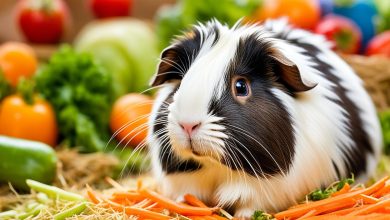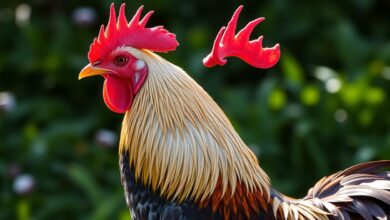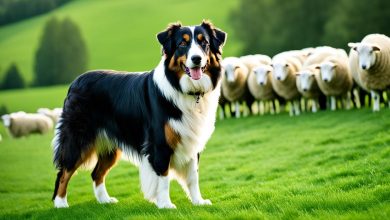Blue Heeler Mixes, also known as Australian Cattle Dog Hybrids, blend the Australian Cattle Dog’s best traits with other breeds. They are known for their loyalty, intelligence, and strong herding instincts. These qualities make them ideal companions for active families. Their blue or red speckled coats make them a visually striking addition to any home.
The Blue Heeler was recognized as a purebred by the American Kennel Club in 1980. They have an average lifespan of 12 to 15 years. Despite their generally good health, they can face issues like hip dysplasia, progressive retinal atrophy, deafness, cataracts, and ear infections.
Origins and History of the Blue Heeler Breed
The Blue Heeler, also known as the Australian Cattle Dog, has a storied past dating back to the 19th century in Australia. This breed was crafted by crossing domestic dogs with the Australian Dingo, resulting in a dog adept at surviving the outback and herding cattle over vast distances.
Development of the Blue Heeler in Australia
Thomas Hall played a pivotal role in the creation of the Blue Heeler breed during the 1800s. He combined traits from Dalmatians, Bull Terriers, and Black and Tan Kelpies to forge the resilient Queensland heeler or halls heeler we recognize today.
Breeding for Herding Cattle in the Outback
The australian cattle dog was crucial for herding cattle across Australia’s expansive landscapes. Their instinct to nip at the cattle’s heels, or “heeling,” ensured the herd stayed in line. The blue heeler‘s unique heritage and exceptional herding skills made it a vital asset for farmers and ranchers in the Australian outback.
| Breed Characteristic | Value |
|---|---|
| Male Height | 46–51 cm (18–20 in) |
| Female Height | 43–48 cm (17–19 in) |
| Weight Range | 15–22 kg (33–49 lb) |
“The Hall’s heeler breed was developed through repeated backcrossing by Thomas Simpson Hall, starting in 1825 until he achieved a highly useful cattle dog by 1832.”
The Unique Appearance of Blue Heeler Mixes
Blue Heeler mixes stand out with their distinct look, blending traits from their parent breeds. They have a medium size, strong build, and a thick, double coat. This coat can be the classic blue heeler pattern or the reddish-brown red heeler color, often with tan marks on their legs, chest, and head.
Physical Characteristics and Coat Colors
The blue heeler mix appearance features a medium-length, weather-resistant coat that can be straight or slightly wavy. Hues range from the blue-gray speckled pattern to solid red or a mix of tan and blue. Some heeler crossbreeds show a tricolor mix, making them truly stand out.
Size and Weight Variations
Blue heeler mixes come in various sizes, usually standing 16 to 20 inches tall and weighing 30 to 50 pounds. For instance, a blue heeler pitbull mix might weigh 35 to 65 pounds, with males often larger than females.
| Breed | Height (Inches) | Weight (Pounds) |
|---|---|---|
| Blue Heeler | 18-20 (male), 17-19 (female) | 35-50 |
| Blue Heeler Pitbull Mix | 17-21 | 35-65 |
Despite their size and coat differences, blue heeler mixes are sure to draw the eye of any dog enthusiast with their unique and captivating look.
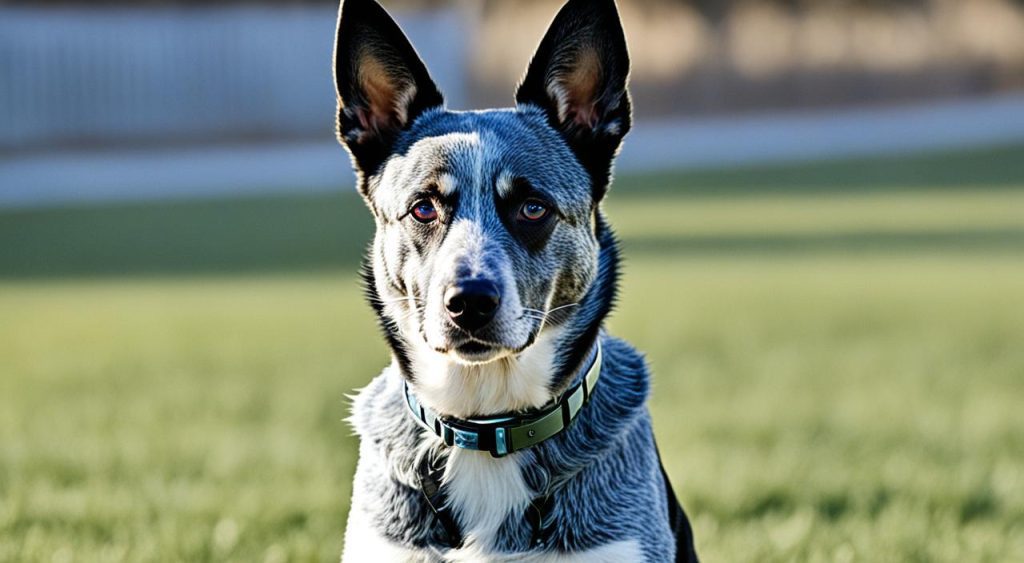
Personality and Temperament of Blue Heeler Mix
Blue Heeler Mixes exhibit a high energy and intelligent nature, inherited from their Australian Cattle Dog lineage. They are incredibly active, needing both mental and physical stimulation. This makes them perfect for various dog sports and activities.
Moreover, these dogs are loyal and protective, forming deep bonds with their families. Yet, they can be cautious around strangers. Thus, proper socialization and training are crucial for their well-being.
High Energy and Intelligent Nature
Blue Heeler Mixes are not just intelligent but also energetic, demanding a lot of physical and mental stimulation. They excel in dog sports like herding, agility, and obedience. Their sharp problem-solving abilities make them thrive in these activities.
Loyalty and Protective Instincts
These dogs are famous for their loyalty and protective instincts. They bond deeply with their family and can serve as excellent watchdogs, alerting their owners to potential threats. With the right socialization, they become friendly and welcoming to guests. Yet, they always keep a watchful eye on their family.
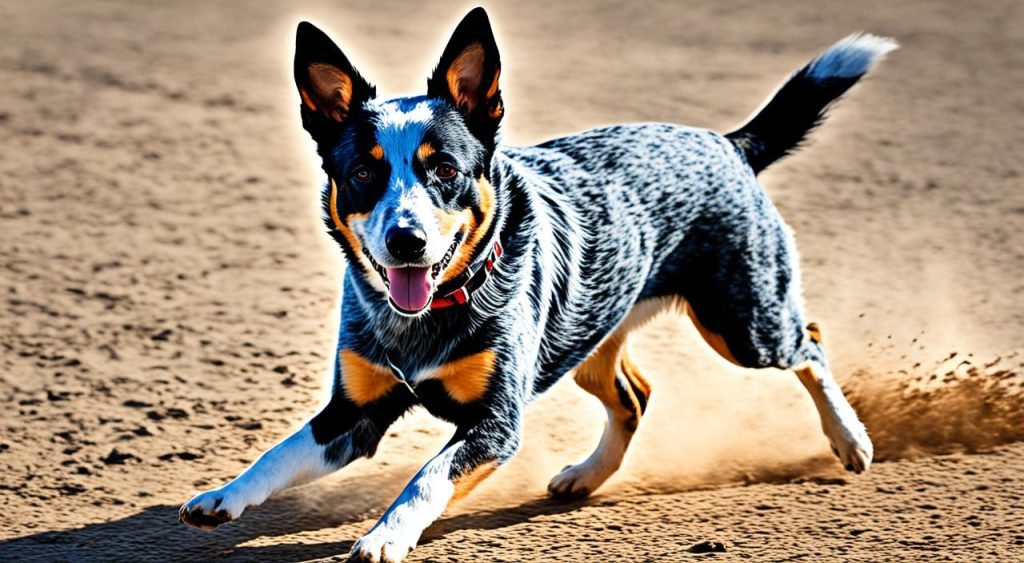
“Blue Heeler Mixes are the ultimate active, intelligent, and loyal companion for the right household.”
Blue Heeler Mix: Loyal and Energetic Companion
If you’re looking for an active and engaging family pet, the Blue Heeler mix might be ideal. These dogs blend the loyalty, smarts, and high energy of the Australian Cattle Dog with traits from another breed. As a blue heeler mix family pet or heeler hybrid companion, they do well in homes ready to fulfill their exercise and training needs.
The Blue Heeler’s herding background makes these australian cattle dog mix as a pet very smart and ready to please. With early socialization and consistent training, they become loyal, loving family members. Yet, their endless energy and strong will need an experienced owner who can keep them mentally and physically stimulated.
| Trait | Blue Heeler Mix Characteristics |
|---|---|
| Energy Level | High – Requires extensive daily exercise and playtime |
| Trainability | Highly intelligent and eager to please, respond well to positive reinforcement training |
| Grooming Needs | Moderate – Brush weekly to manage shedding |
| Apartment Suitability | Low – Thrive better in homes with access to a yard or open space |
With the right environment and care, the Blue Heeler mix becomes a loyal and energetic companion. Their mix of smarts, athleticism, and loyalty makes them a favorite among active families. They’re a great choice for those seeking an engaging blue heeler mix family pet or heeler hybrid companion.
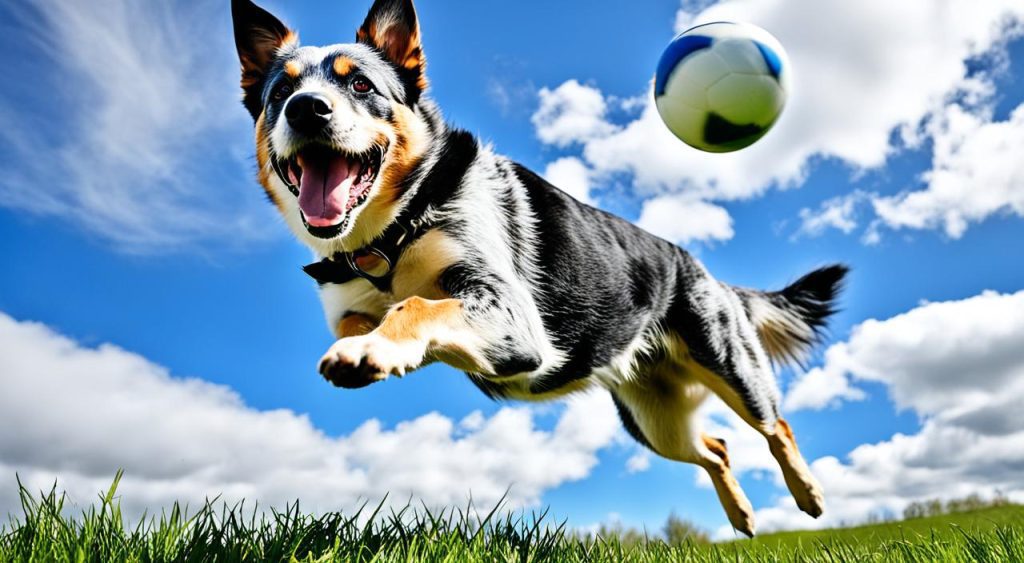
Training and Exercise Needs for Blue Heeler Mixes
Blue heeler mixes are known for their high energy and intelligence. They need thorough training and exercise to use their vitality positively. Early socialization and obedience training are key for these dogs to become well-behaved companions.
Early Socialization and Obedience Training
These dogs excel in activities that challenge their minds, like agility training, herding, and obedience trials. Offering them plenty of blue heeler mix training and socialization helps prevent issues like excessive barking, aggression, or separation anxiety.
Providing Mental and Physical Stimulation
Aside from heeler hybrid exercise, these dogs need regular physical activity to keep muscles toned, prevent obesity, and reduce behavioral problems. Running, hiking, and interactive playtime in a secure area are crucial for blue heeler mixes to use their energy constructively.
Continual learning and adaptation are crucial for blue heeler crossbreeds. Introducing new games and challenges keeps their minds sharp. Revisiting basic training periodically helps them retain skills and reinforces positive behaviors.
Consistency in commands and training methods among household members is essential. Celebrating small training successes keeps the motivation and persistence high in socialization for blue heeler mixes and mental stimulation for heeler crossbreeds.
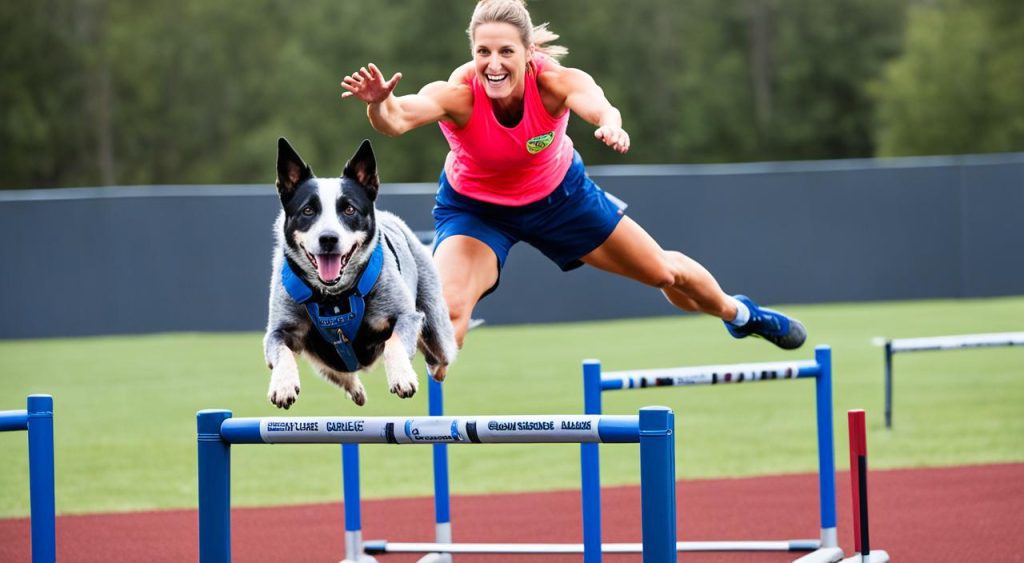
“Flexibility in training methods is crucial to adapt to changing life circumstances like moving homes or introducing new family members.”
Regular veterinary check-ups are vital to spot and treat health issues early. These can affect a dog’s ability to learn and adapt. By meeting the training and exercise needs of blue heeler mixes, owners can help these energetic and intelligent dogs thrive and become loyal, well-behaved companions.
Common Blue Heeler Hybrid Breeds
Blue Heeler hybrids present a diverse array of mix breeds, each offering a unique blend of traits. These Australian Cattle Dog mixes combine the intelligence, energy, and loyalty of the Blue Heeler with other breeds. This creates canine companions that cater to a wide range of preferences.
Border Heeler (Border Collie/Blue Heeler)
The Border Heeler, a cross between the Blue Heeler and the Border Collie, inherits exceptional herding abilities and keen intellect. These dogs are highly energetic and smart, requiring consistent training and mental stimulation. They are an excellent choice for active owners who love the outdoors.
Basset Heeler (Basset Hound/Blue Heeler)
The Basset Heeler combines the friendly nature of the Basset Hound with the Blue Heeler’s energy and vigilance. This mix breed is taller than a purebred Basset Hound but retains the distinctive long body. They are an appealing choice for families seeking a loyal and playful companion.
Other intriguing Blue Heeler hybrids include the muscular Blueweiler (Australian Cattle Dog x Rottweiler) and the courageous Doxie Heeler (Blue Heeler x Dachshund). These crossbreeds offer a diverse range of characteristics for every dog enthusiast.
Whether you’re drawn to the gentle Bernese Cattle Dog (Bernese Mountain Dog x Blue Heeler) or the cheerful Blue Spaniel (Cocker Spaniel x Blue Heeler), the options are extensive and fascinating. Each hybrid breed brings something special, making them a popular choice for those seeking a loyal, energetic, and adaptable canine companion.
Grooming and Care for Blue Heeler Crossbreeds
Blue Heeler crossbreeds are known for their energy and loyalty. They need regular grooming to stay healthy and prevent matting. Their dense, double coat, inherited from the Blue Heeler, requires consistent brushing. This keeps their fur in top condition.
To groom a Blue Heeler mix, brush their coat at least once or twice a week. Brushing more during shedding seasons is advised. This routine helps distribute natural oils, removes dirt, and prevents matting or tangles. Regular baths, nail trims, and ear checks are also essential for their grooming needs.
| Grooming Task | Frequency |
|---|---|
| Brushing | 1-2 times per week, with more frequent brushing during shedding seasons |
| Bathing | As needed, typically every 4-6 weeks |
| Nail Trims | Every 4-6 weeks |
| Ear Checks | Weekly |
Regular grooming keeps Blue Heeler mixes looking and feeling great. It also supports their health and happiness. With some time and care, these crossbreeds can thrive and bring joy to their families for many years.
Potential Health Concerns of Blue Heeler Mixes
Blue Heeler Mixes are typically robust, yet they may face specific health issues due to their genetic background. These can include hip dysplasia, progressive retinal atrophy, deafness, cataracts, and ear infections. It’s crucial to maintain regular veterinary check-ups and preventive care to keep your Blue Heeler Mix in optimal health throughout their life.
Inherited Health Issues from Parent Breeds
Blue Heeler Mixes may inherit health problems from their Australian Cattle Dog and crossbred parents. Common health issues include:
- Hip dysplasia: A genetic condition that can lead to painful joint and mobility issues.
- Progressive retinal atrophy (PRA): A degenerative eye condition that can cause blindness.
- Deafness: An inherited condition that can affect one or both ears.
- Cataracts: Clouding of the eye lens that can impair vision.
- Ear infections: Recurrent ear infections are more common in some Blue Heeler Mixes.
Regular Veterinary Check-ups and Preventive Care
Regular veterinary check-ups are vital to address potential health concerns early. Your vet can perform screenings and tests to catch any underlying issues. This allows for timely intervention and management. Additionally, preventive care, such as vaccinations, parasite control, and joint supplements, can help reduce health risks and ensure your Blue Heeler Mix lives a long, healthy life.
“Keeping a close eye on your Blue Heeler Mix’s health and working closely with your veterinarian is essential for their well-being.”
Living Arrangements and Lifestyle Fit for Blue Heeler Hybrids
Blue Heeler mixes excel in homes that offer them space and activities to keep their minds and bodies active. While they can adjust to apartment living with enough exercise, a house with a secure yard is best for these energetic dogs.
These dogs need daily vigorous exercise, like long walks, runs, or playtime in a secure, open space. They also thrive on interactive toys and activities that test their problem-solving abilities and fulfill their herding instincts. A sedentary lifestyle is not suitable for them, as they require an active lifestyle for blue heeler mixes to remain content and healthy.
- The Blue Heeler Doberman Mix typically weighs between 35-80 pounds, with males falling within the range of 40-80 pounds and females weighing around 35-70 pounds.
- The average lifespan of the Blue Heeler Doberman Mix is approximately 10 to 13 years with proper care, nutrition, and exercise.
- Recommended health screenings for this hybrid breed may include hip and elbow evaluations, ophthalmologic exams, hearing tests, and genetic testing for specific conditions inherited from the parent breeds.
- Feeding adult Blue Heeler Doberman Mixes twice a day is generally recommended, while puppies may require more frequent meals.
Potential owners must be ready to commit to daily exercise, mental stimulation, and regular grooming for the blue heeler mix living requirements. A securely fenced yard or access to open areas is crucial for these lively and playful dogs to flourish. With the right heeler crossbreed home environment and dedication, Blue Heeler mixes can become devoted and fulfilling companions.
| Breed | Height | Weight | Lifespan |
|---|---|---|---|
| Blue Heeler Doberman Mix | 35-80 pounds | 40-80 pounds (males), 35-70 pounds (females) | 10-13 years |
| Australian Cattle Dog Border Collie Mix | 17-20 inches | 30-55 pounds | N/A |
Adopting a Blue Heeler Mix Rescue Dog
Adopting a blue heeler mix from a reputable rescue organization or shelter is a rewarding choice. It’s also more affordable than buying a puppy from a breeder. Groups like the Australian Cattle Dog Rescue Association, Texas Cattle Dog Rescue, and Arizona Cattle Dog Rescue focus on finding homes for Blue Heeler Mixes and similar breeds.
Reputable Rescue Organizations and Shelters
Choosing to adopt a blue heeler crossbreed from these australian cattle dog rescue organizations helps a dog get a second chance. It also supports the crucial work these groups do. Adoption fees are lower than buying from a breeder. They often include initial veterinary care, vaccinations, microchipping, and spaying/neutering.
Benefits of Adopting a Blue Heeler Mix
Adopting a blue heeler mix rescue brings many benefits. You’ll know you’re giving a loving home to a dog in need. These dogs are intelligent and energetic, offering great companionship and loyalty. With proper training and exercise, a Blue Heeler Mix can be a wonderful addition to any family.
FAQ
What are Blue Heeler Mixes?
Blue Heeler Mixes, also known as Australian Cattle Dog Hybrids, are a mix of the Australian Cattle Dog (Blue Heeler) with other breeds. They are known for their loyalty, intelligence, and strong herding instincts. These traits make them great companions for active families.
What is the history and origin of the Blue Heeler breed?
The Blue Heeler, also known as the Australian Cattle Dog, was developed in the 19th century in Australia. It was created by crossing domestic dogs with the Australian Dingo. This mix produced a hardy, intelligent herding dog suited for the harsh Australian outback.
How do Blue Heeler Mixes typically look?
Blue Heeler Mixes often have the distinct look of their parent breeds. They are medium-sized with a sturdy build and a dense, double coat. Their coat can be blue speckled or reddish-brown, with tan markings on their legs, chest, and head.
What is the personality and temperament of Blue Heeler Mixes?
These dogs are known for their high energy, intelligence, and strong work ethic. They are active, intelligent, and thrive on mental and physical challenges. They are also loyal and protective, bonding closely with their families.
What are the training and exercise needs of Blue Heeler Mixes?
Blue Heeler Mixes need extensive training and exercise to use their energy and intelligence positively. Early socialization and obedience training are key. They do well in activities like agility, herding, and obedience trials. They also need plenty of physical exercise to prevent destructive behaviors.
What are some common Blue Heeler hybrid breeds?
Popular Blue Heeler hybrids include the Border Heeler (Blue Heeler x Border Collie) and the Basset Heeler (Blue Heeler x Basset Hound). These mixes combine unique traits that appeal to many dog owners.
What are the grooming and care needs of Blue Heeler Mixes?
They have a dense, double coat that requires regular grooming. Brushing their coat weekly, or more during shedding seasons, helps prevent matting and keeps their fur healthy.
What are the potential health concerns for Blue Heeler Mixes?
They can inherit health issues from their parent breeds, such as hip dysplasia, progressive retinal atrophy, deafness, cataracts, and ear infections. Regular vet check-ups and preventive care are crucial to manage these risks.
What type of living environment is best for Blue Heeler Mixes?
They do best in active households with plenty of space and stimulation. A home with a fenced yard is ideal, as they need daily vigorous exercise and activities that challenge their problem-solving skills and herding instincts.
How can I adopt a Blue Heeler Mix?
Adopting from a reputable rescue or shelter is rewarding and often more affordable than buying from a breeder. Rescue groups help find homes for Blue Heeler Mixes and cover initial vet care, vaccinations, microchipping, and spaying/neutering.

